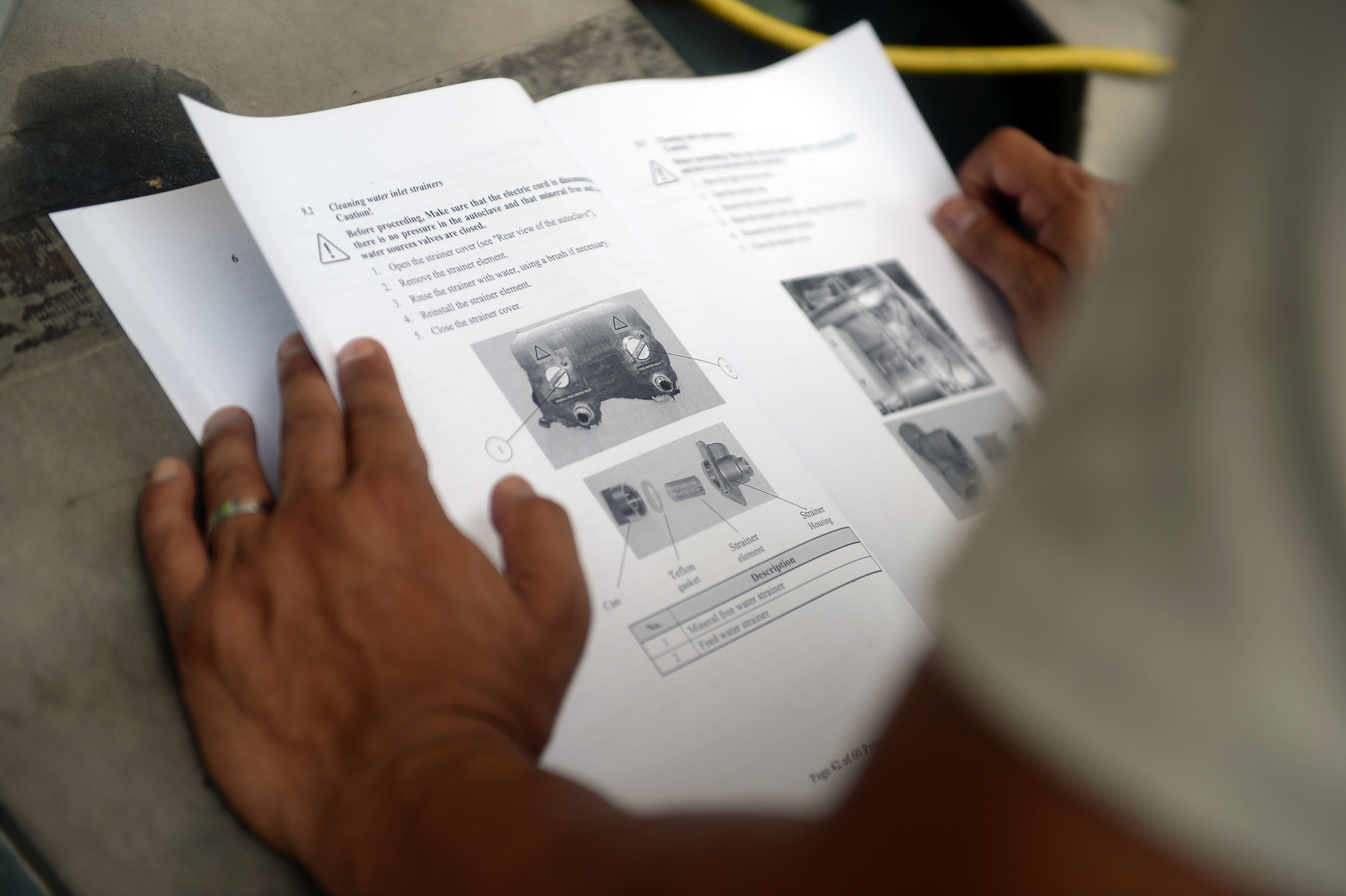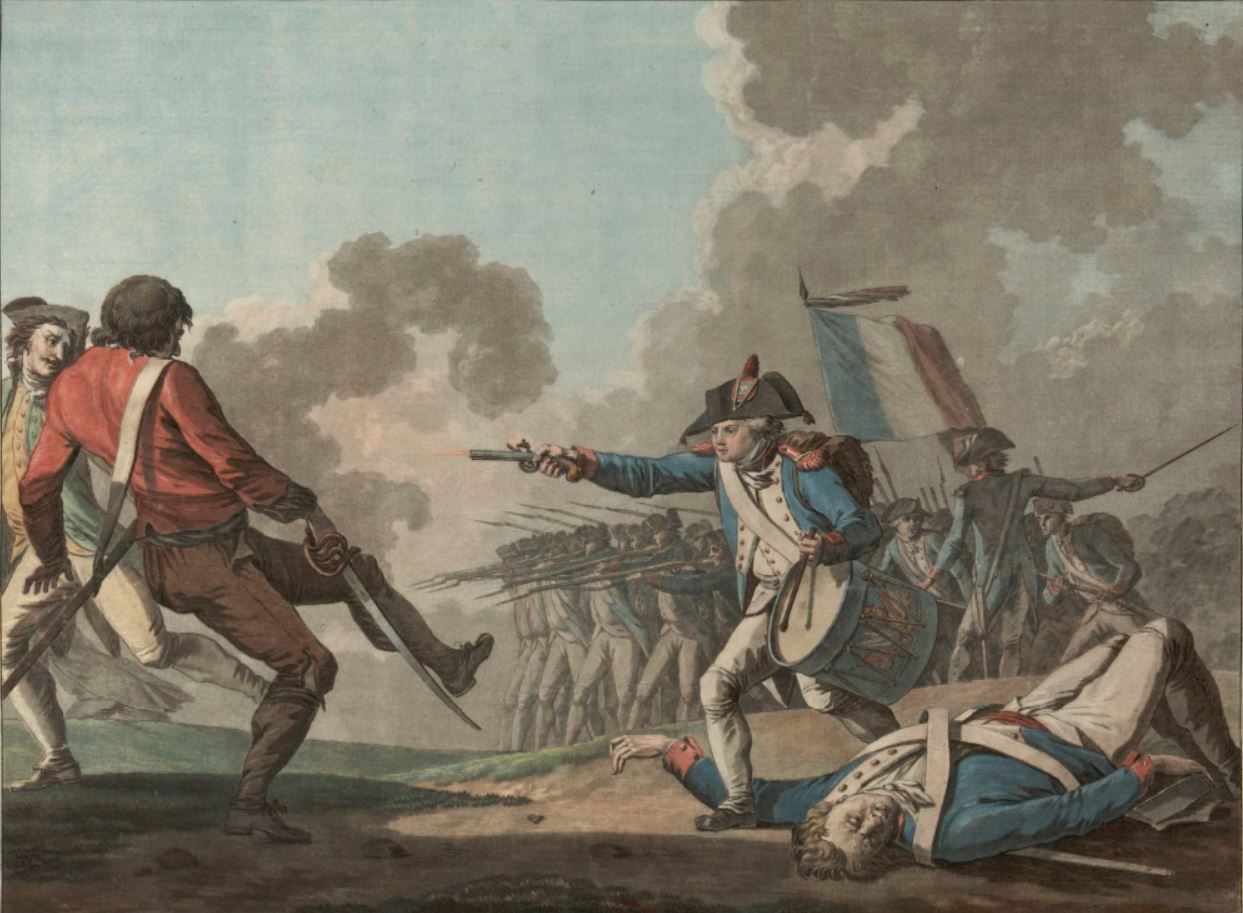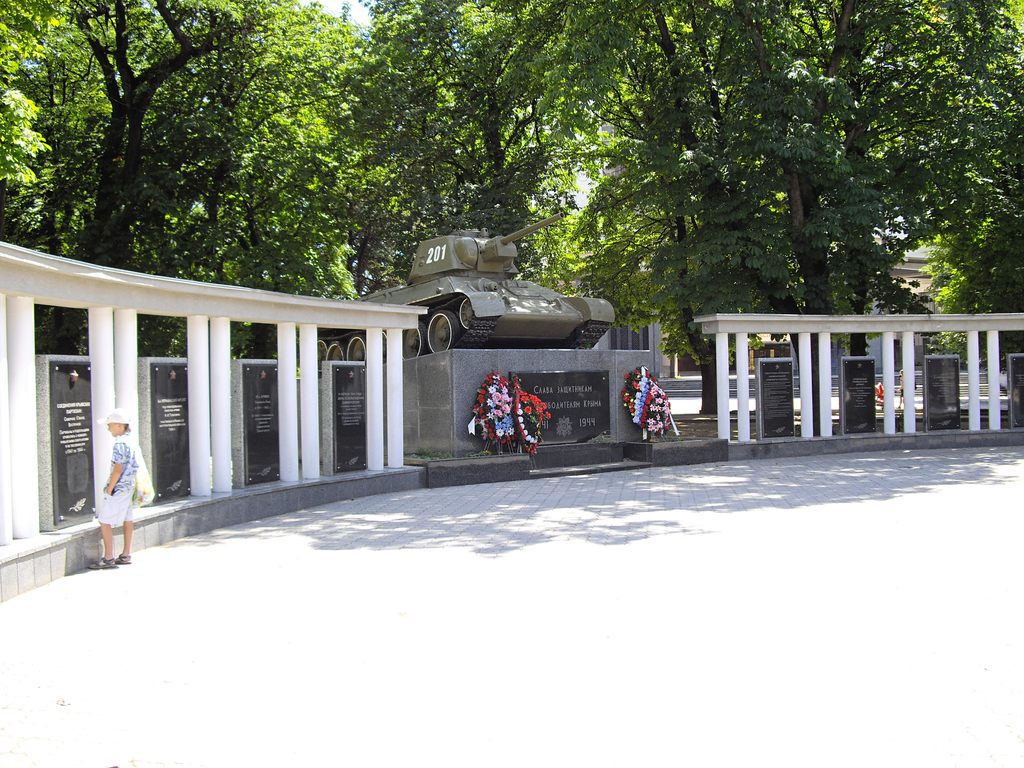|
Yuriy Gaven
Yuri Petrovich Gaven (russian: Юрий Петрович Гавен; lv, Juris Gavens) (18 March 1884 – 4 October 1936) was a Soviet revolutionary, statesman and Chekist of Latvian ethnicity, a key figure in defeating of the Crimean People's Republic (with establishment of the so-called Taurida Soviet Socialist Republic) and active participant of the Red Terror in Crimea. Biography Born as Jānis Daumanis in to a Latvian peasant family on 18 March 1884 at the hamlet of Bikern near Riga, in 1901 he graduated the Baltic Teacher Seminary becoming a people's teacher. The same year in 1901 Gaven joined the Russian Social Democratic Labour Party and until 1905 worked as a secretary of Riga's party organization. During the 1905 Revolution, he was a leader of militant formations of peasants in Livland Governorate and in 1906 he became a member of the Central Committee of the Social Democracy of Livland Krai. On 6 February 1908 Gaven was arrested and until the start of World War I (J ... [...More Info...] [...Related Items...] OR: [Wikipedia] [Google] [Baidu] |
Crimean ASSR
During the existence of the Union of Soviet Socialist Republics, different governments existed within the Crimean Peninsula. From 1921 to 1936, the government in the Crimean Peninsula was known as the Crimean Autonomous Socialist Soviet Republic; uk, Автономна Кримська Соціалістична Радянська Республіка, Avtonomna Krymska Sotsialistychna Radyanska Respublika, Autonomous Crimean Socialist Soviet Republic and was an Autonomous Soviet Socialist Republic located within the Russian Soviet Federative Socialist Republic; from 1936 to 1945, it was called the Crimean Autonomous Soviet Socialist Republic; official Crimean Tatar name in the Yañalif: Qrьm Avtonomjalь Sovet Sotsialist Respuвlikasь; russian: Крымская Автономная Советская Социалистическая Республика, Krymskaya Avtonomnaya Sovetskaya Sotsialisticheskaya Respublika; uk, Кримська Автономна Радянська ... [...More Info...] [...Related Items...] OR: [Wikipedia] [Google] [Baidu] |
Minusinsk
Minusinsk (russian: Минуси́нск; kjh, Минсуғ) is a historical types of inhabited localities in Russia, town in Krasnoyarsk Krai, Russia. Population: 44,500 (1973). Geography Minusinsk marks the center of the Minusinsk Hollow, one of the most important archaeological areas north of Pazyryk culture, Pazyryk. It is associated with the Afanasevo culture, Afanasevo, Tashtyk culture, Tashtyk, and Tagar cultures—all of them named after settlements in the vicinity of Minusinsk. History "About 330-200 B.C. the iron age triumphed at Minusinsk, producing spiked axes, partly bronze and partly iron, and a group of large collective burial places." Greco-Roman funerary masks, like those found at Pazyryk burials, Pazyryk, make up the "Minusinsk group: at Trifonova, Bateni, Beya, Kali, Znamenka, etc." "The Indo-European aristocracy with its Sarmatians, Sarmatian connections was succeeded at Minusinsk by the Kirghiz after the third century A.D." The Russian settlement of ... [...More Info...] [...Related Items...] OR: [Wikipedia] [Google] [Baidu] |
1884 Births
Events January–March * January 4 – The Fabian Society is founded in London. * January 5 – Gilbert and Sullivan's ''Princess Ida'' premières at the Savoy Theatre, London. * January 18 – Dr. William Price attempts to cremate his dead baby son, Iesu Grist, in Wales. Later tried and acquitted on the grounds that cremation is not contrary to English law, he is thus able to carry out the ceremony (the first in the United Kingdom in modern times) on March 14, setting a legal precedent. * February 1 – ''A New English Dictionary on historical principles, part 1'' (edited by James A. H. Murray), the first fascicle of what will become ''The Oxford English Dictionary'', is published in England. * February 5 – Derby County Football Club is founded in England. * March 13 – The siege of Khartoum, Sudan, begins (ends on January 26, 1885). * March 28 – Prince Leopold, the youngest son and the eighth child of Queen Victoria and Pr ... [...More Info...] [...Related Items...] OR: [Wikipedia] [Google] [Baidu] |
Handbook On History Of The Communist Party And The Soviet Union 1898–1991
A handbook is a type of reference work, or other collection of instructions, that is intended to provide ready reference. The term originally applied to a small or portable book containing information useful for its owner, but the ''Oxford English Dictionary'' defines the current sense as "any book ... giving information such as facts on a particular subject, guidance in some art or occupation, instructions for operating a machine, or information for tourists." accessed 23 March 2017. A handbook is sometimes referred to as a '''' ( |
Great Soviet Encyclopedia
The ''Great Soviet Encyclopedia'' (GSE; ) is one of the largest Russian-language encyclopedias, published in the Soviet Union from 1926 to 1990. After 2002, the encyclopedia's data was partially included into the later ''Bolshaya rossiyskaya entsiklopediya'' (or '' Great Russian Encyclopedia'') in an updated and revised form. The GSE claimed to be "the first Marxist–Leninist general-purpose encyclopedia". Origins The idea of the ''Great Soviet Encyclopedia'' emerged in 1923 on the initiative of Otto Schmidt, a member of the Russian Academy of Sciences. In early 1924 Schmidt worked with a group which included Mikhail Pokrovsky, (rector of the Institute of Red Professors), Nikolai Meshcheryakov (Former head of the Glavit, the State Administration of Publishing Affairs), Valery Bryusov (poet), Veniamin Kagan (mathematician) and Konstantin Kuzminsky to draw up a proposal which was agreed to in April 1924. Also involved was Anatoly Lunacharsky, People's Commissar of Education ... [...More Info...] [...Related Items...] OR: [Wikipedia] [Google] [Baidu] |
Naukova Dumka
Naukova Dumka ( uk, Наукова Думка — literally "scientific thought") is a publishing house in Kyiv, Ukraine. It was established by the National Academy of Sciences of Ukraine in 1922, largely owing to the efforts of Ahatanhel Krymsky, a prominent Ukrainian linguist and orientalist. It is one of the oldest scientific and academic publishing houses in the former Soviet Union and became known as ''Naukova Dumka'' in 1964, before which it simply functioned as the official publisher of the National Academy of Sciences of Ukraine. It continues its operations in Ukraine, publishing primarily scientific and historical works as well as dictionaries. See also *List of publishing companies of Ukraine This is a list of publishing companies in Ukraine. List {{DEFAULTSORT:Publishing companies of Ukraine Ukraine Ukraine ( uk, Україна, Ukraïna, ) is a country in Eastern Europe. It is the second-largest European country after R ... References History of Na ... [...More Info...] [...Related Items...] OR: [Wikipedia] [Google] [Baidu] |
Counterrevolutionary
A counter-revolutionary or an anti-revolutionary is anyone who opposes or resists a revolution, particularly one who acts after a revolution in order to try to overturn it or reverse its course, in full or in part. The adjective "counter-revolutionary" pertains to movements that would restore the state of affairs, or the principles, that prevailed during a prerevolutionary era. Definition A counter-revolution is opposition or resistance to a revolutionary movement. It can refer to attempts to defeat a revolutionary movement before it takes power, as well as attempts to restore the old regime after a successful revolution. Europe France The word "counter-revolutionary" originally referred to thinkers who opposed themselves to the 1789 French Revolution, such as Joseph de Maistre, Louis de Bonald or, later, Charles Maurras, the founder of the ''Action française'' monarchist movement. More recently, it has been used in France to describe political movements that reject the lega ... [...More Info...] [...Related Items...] OR: [Wikipedia] [Google] [Baidu] |
Stalinist Purges
The Great Purge or the Great Terror (russian: Большой террор), also known as the Year of '37 (russian: 37-й год, translit=Tridtsat sedmoi god, label=none) and the Yezhovshchina ('period of Yezhov'), was Soviet General Secretary Joseph Stalin's campaign to solidify his power over the party and the state; the purges were also designed to remove the remaining influence of Leon Trotsky as well as other prominent political rivals within the party. It occurred from August 1936 to March 1938. Following the death of Vladimir Lenin in 1924 a power vacuum opened in the Communist Party. Various established figures in Lenin's government attempted to succeed him. Joseph Stalin, the party's General Secretary, outmaneuvered political opponents and ultimately gained control of the Communist Party by 1928. Initially, Stalin's leadership was widely accepted; his main political adversary Trotsky was forced into exile in 1929, and the doctrine of "socialism in one country" became ... [...More Info...] [...Related Items...] OR: [Wikipedia] [Google] [Baidu] |
Revkom
{{no footnotes, date=May 2016A revolutionary committee or revkom (russian: Революционный комитет, ревком) were Bolshevik-led organizations in Soviet Russia and other Soviet republics established to serve as provisional governments and temporary Soviet administrations in territories under the control of the Red Army in 1918–1920, during the Russian Civil War and foreign military intervention. The forms of their work were inherited from Military Revolutionary Committees of the Russian Revolution of 1917. The name was borrowed from the history of the French Revolution, where ''comités révolutionnaires'' were created, the superior ones being the Committee of Public Safety and Committee of General Security. Revolutionary committees were often created in anticipation of the advances of the Red Army. In some cases they were created in places remote from the intended place of action, as was the case with the Provisional Polish Revolutionary Committee. In other ... [...More Info...] [...Related Items...] OR: [Wikipedia] [Google] [Baidu] |
Alexey Kaledin
Aleksei Maksimovich Kaledin (russian: Алексе́й Макси́мович Каледи́н; 24 October 1861 – 11 February 1918) was a Don Cossack Cavalry General who led the Don Cossack White movement in the opening stages of the Russian Civil War. Early Years Kaledin attended the Mikhaylovskoye Artillery School and the General Staff Academy (Imperial Russia), General Staff Academy. World War I Kaledin served as a cavalry commander at the beginning of the war, before taking over command of a cavalry corps, and rising to the rank of General of the Cavalry. He was then assigned command of the 8th Army (Russian Empire), 8th Army on the Southwest Front, and participated in the Brusilov offensive. Kaledin spoke at the Moscow State Conference, stating "all Soviets and committees must be abolished, both in the army and in the rear." Following the Kornilov affair, Kaledin retreated back to Novocherkassk, and protection of the ''voisko'', to avoid arrest by the Provisional Governm ... [...More Info...] [...Related Items...] OR: [Wikipedia] [Google] [Baidu] |
Simferopol
Simferopol () is the second-largest city in the Crimea, Crimean Peninsula. The city, along with the rest of Crimea, is internationally recognised as part of Ukraine, and is considered the capital of the Autonomous Republic of Crimea. However, it is under the ''de facto'' control of Russia, which Annexation of Crimea by the Russian Federation, annexed Crimea in 2014 and regards Simferopol as the capital of the Republic of Crimea. Simferopol is an important political, economic and transport hub of the peninsula, and serves as the administrative centre of both Simferopol Municipality and the surrounding Simferopol District. After the 1784 Annexation of Crimea by the Russian Empire, annexation of the Crimean Khanate by the Russian Empire, the Russian empress decreed the foundation of the city with the name Simferopol on the location of the Crimean Tatars, Crimean Tatar town of Aqmescit ("White Mosque"). The population was Etymologies The name Simferopol ( uk, Сімферо́ ... [...More Info...] [...Related Items...] OR: [Wikipedia] [Google] [Baidu] |
Sevastopol
Sevastopol (; uk, Севасто́поль, Sevastópolʹ, ; gkm, Σεβαστούπολις, Sevastoúpolis, ; crh, Акъя́р, Aqyár, ), sometimes written Sebastopol, is the largest city in Crimea, and a major port on the Black Sea. Due to its strategic location and the navigability of the city's harbours, Sevastopol has been an important port and naval base throughout its history. Since the city's founding in 1783 it has been a major base for Russia's Black Sea Fleet, and it was previously a closed city during the Cold War. The total administrative area is and includes a significant amount of rural land. The urban population, largely concentrated around Sevastopol Bay, is 479,394, and the total population is 547,820. Sevastopol, along with the rest of Crimea, is internationally recognised as part of Ukraine, and under the Ukrainian legal framework, it is administratively one of two cities with special status (the other being Kyiv). However, it has been occupied b ... [...More Info...] [...Related Items...] OR: [Wikipedia] [Google] [Baidu] |
.jpg)






